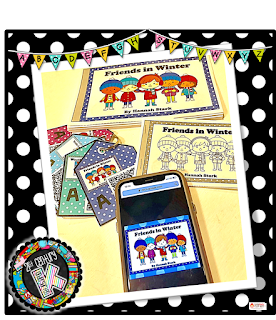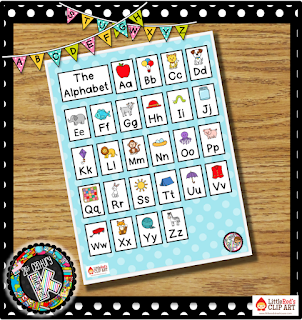"I will never have too many kindergarten guided reading books!"
Most reading teachers will agree with this statement 100%. If you are like me you want to collect all.the.books. I mean, there's no better feeling than redeeming a few thousand Scholastic Book Club points or finding great literature on the sale table at Books-A-Million, right?!? But, filling our shelves with leveled guided reading books is just as important as those awesome read-aloud texts.In order to improve at anything, what do we do? We practice! If we want to be a better baker, then we bake more. If we want to be a better painter, then we paint more. Reading is no different. If we want our students to be better readers, they need to read more. In her book Literacy Lessons Designed for Individuals, Marie Clay (the researcher behind Reading Recovery) says that beginning or struggling readers need to read a high volume of books. In the beginning stages of Reading Recovery lessons, students need to read 2-4 new texts per day in order to build their experience and confidence.
In order for beginning readers to get all the practice they need to become independent readers, we MUST have books to put in their hands that THEY CAN READ. I know, that sounds simple and trivial, but it's VITAL to a successful guided reading program. In a solid guided reading program students need to read a minimum of 2-3 new texts each week... on their level. This doesn't mean stories that we read everyday for a week and students memorize. This means 2-3 books that we can provide scaffolded instruction and thorough introductions for and then students actually read them on their own. Beyond that, students need to reread these familiar stories for fluency practice and to firm up sight word knowledge and comprehension a minimum of 1-2 times a day.
WHOA. Now you know what I mean by "There's no such thing as too many Guided Reading books in Kindergarten," right?!?! It's imperative that we improve our classroom libraries to provide our kindergartners with real books that they can feel confident tackling on their own. This practice and confidence will press them forward in their reading progress at a much faster rate than memorizing one story per week in a small group setting.
As teachers this is something that we know, but it can be very hard to execute in the Kindergarten classroom. Beginning readers cannot just go to the shelf and pick up any book and read it. In fact, most trade books are at a third grade (or much higher) reading level. While looking at trade books and teacher read-aloud texts is valuable experience for kindergartners, it is not the same as actually reading. In order to move forward as readers, kindergarten students need texts in their hands that they can read with independence... and lots of them!
Finding texts that Kindergartners can read isn't necessarily that difficult. Many basal reading series programs come with a variety of smaller, leveled texts for students to read in guided reading groups or small group instruction. My school uses Saxon Phonics - which comes with an entire series of decodable texts that correlate with the content in the program. Unfortunately for our students, these texts are often not related to our thematic content. Unless you still follow your basal reading teacher's manual from start to finish you've probably found that your supplemental materials don't always match your core resources. Many times, these texts are boring and contrived. What child really cares about characters named Pat and Nan and will engage in a story about how Kip the pup nips at their knee?!?! No adult wants to read stories like that and no child does, either.
Finding appropriately leveled texts (and lots of them) can be hard. I've bought so many sets of "beginning readers" and phonics-based stories that I've lost track of what I've spent. Some of the best books I've used for beginning readers were the texts used with the Reading Recovery program. These books are intended to be just right for beginning resources, but also tell a story with real characters, photographs, and appropriate words and literacy concepts. For the regular classroom teacher these books can be pricey - especially to create small group sets of books since Reading Recovery is taught one-on-one. The website Reading AtoZ has been my favorite go-to site for years! There are sooooo many books at alllll the levels! So many that searching for what I need from week to week can become very time consuming.
So, like any other good, resourceful Kindergarten teacher with (a sometimes unhealthy) love for clip-art and the lifelong dream of becoming a children's author, I've started to write my own books for Kindergarten guided reading. I love that my books are Kindergarten-content specific, fit seamlessly with my science, social studies, and holiday themes, and are fun to read. In addition to creating new printable kindergarten books for guided reading, I've made them full color digital books as well so that students can scan QR codes and read on a tablet or phone and parents can easily provide their child with options for reading on THEIR level at home without the hassle of sending home and collecting my paper copies.
If you are like me and you are looking for an alternative to build an amazing classroom library of guided reading books, then I'd LOVE for you to check out the library I've started over on TpT!
Wondering what to do while you are waiting?
Sign up for my FREE Workbook on the Top 3 Must-Do's of Every Guided Reading Lesson...
OR follow my brand new podcast!



















